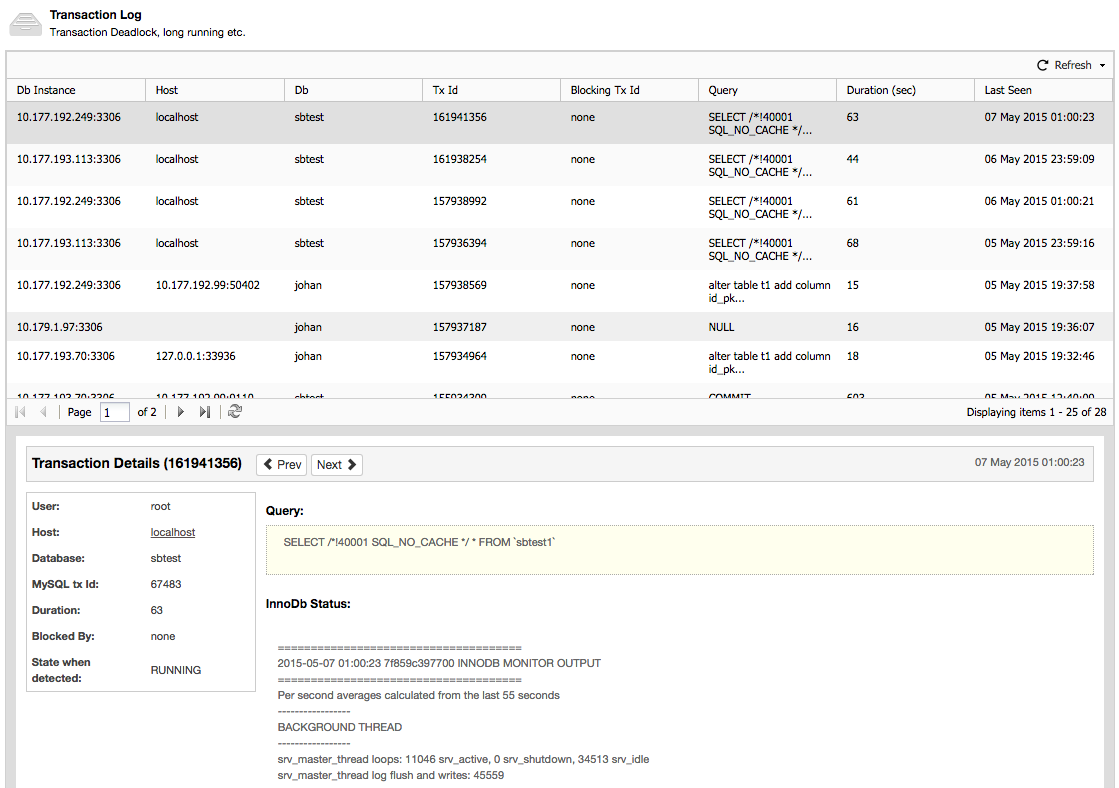blog
ClusterControl 1.2.10 Released

The Severalnines team is pleased to announce the release of ClusterControl 1.2.10. This release contains key new features along with performance improvements and bug fixes. We have outlined some of the key new features below.
- Highlights of ClusterControl 1.2.10 include:
- ClusterControl DSL (Domain Specific Language)
- Integrated Developer Studio (Developer IDE)
- Database Advisors/JS bundle
- On-premise Deployment of MySQL / MariaDB Galera Cluster (New implementation)
- Detection of long running and deadlocked transactions (Galera)
- Detection of most advanced (last committed) node in case of cluster failure (Galera)
- Registration of manually added nodes with ClusterControl
- Failover and Slave Promotion in MySQL 5.6 Replication setups
- General front-end optimizations
For additional details about the release:
- 1.2.10 ChangeLog
- Installation Instructions
- Upgrade instructions
- ClusterControl Admin Guide
- Advisor Bundle on Github
ClusterControl DSL (Domain Specific Language): We are excited to announce our new, powerful ClusterControl DSL, which allows you extend the functionality of your ClusterControl platform by creating Advisors, Auto Tuners or “mini Programs”. The DSL syntax is based on JavaScript, with extensions to provide access to ClusterControl’s internal data structures and functions. The DSL allows you to execute SQL statements, run shell commands/programs across all your cluster hosts, and retrieve results to be processed for advisors/alerts or any other actions.
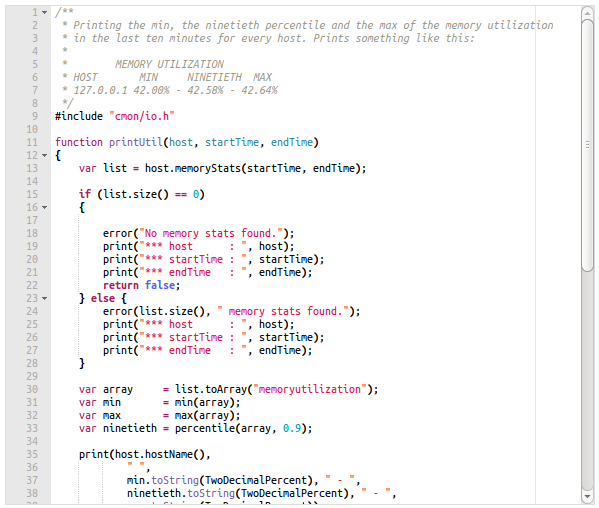
Integrated Developer Studio (Developer IDE): The ClusterControl Dev Studio provides a simple and elegant development environment to quickly create, edit, compile, run, test, debug and schedule your JS programs. This is pretty cool – you are able to develop database advisors or mini programs that automate database tasks from within your web browser.
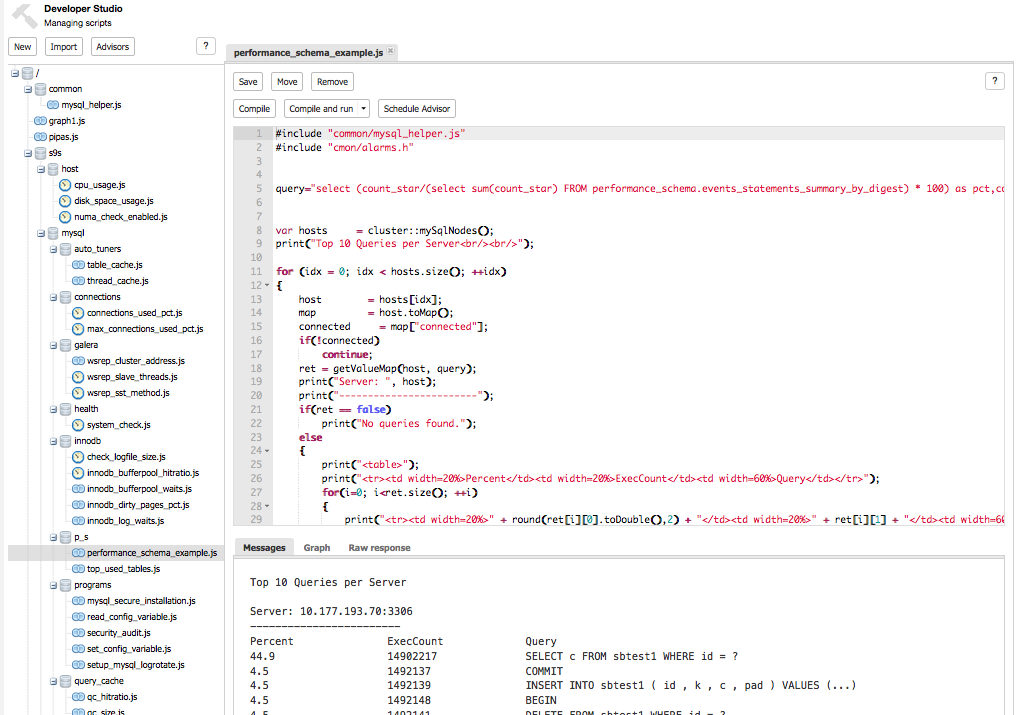
Advisors/JS Bundle: Advisors in ClusterControl are powerful constructs; they provide specific advice on how to address issues in areas such as performance, security, log management, configuration, storage space, etc. They can be anything from simple configuration advice, warning on thresholds or more complex rules for predictions or cluster-wide automation tasks based on the state of your servers or databases.
In general, advisors perform more detailed analysis, and produce more comprehensive recommendations than alerts.
s9s-advisor-bundle on Github:
We ship a set of basic advisors that are open source under an MIT licence and which include rules and alerts on security settings, system checks (NUMA, Disk, CPU), queries, innodb, connections, performance schema, Galera configuration, NDB memory usage, and so on. The advisors can be downloaded from Github. Through the Developer Studio, it is easy to import ClusterControl JS bundles written by our partners or community users, or export your own for others to try out.
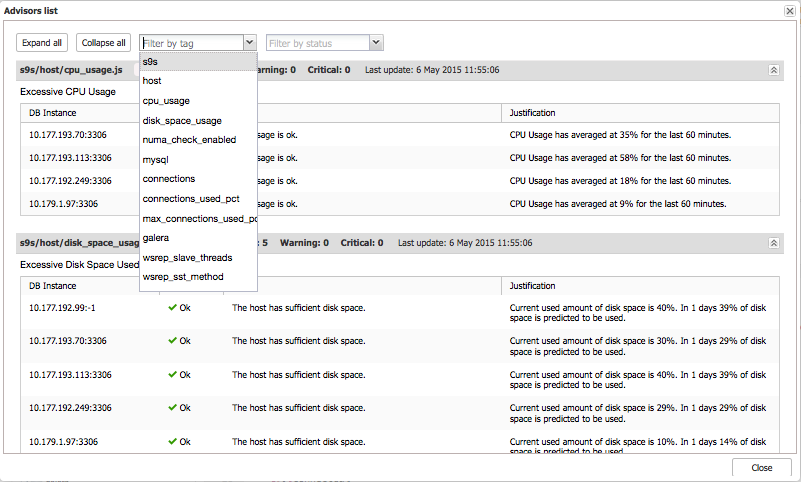
On-premise Deployment of MySQL/MariaDB Galera Cluster: We have rewritten the on-premises deployment functionality for Galera clusters. You can now easily deploy a Galera cluster with up to 9 DB nodes.
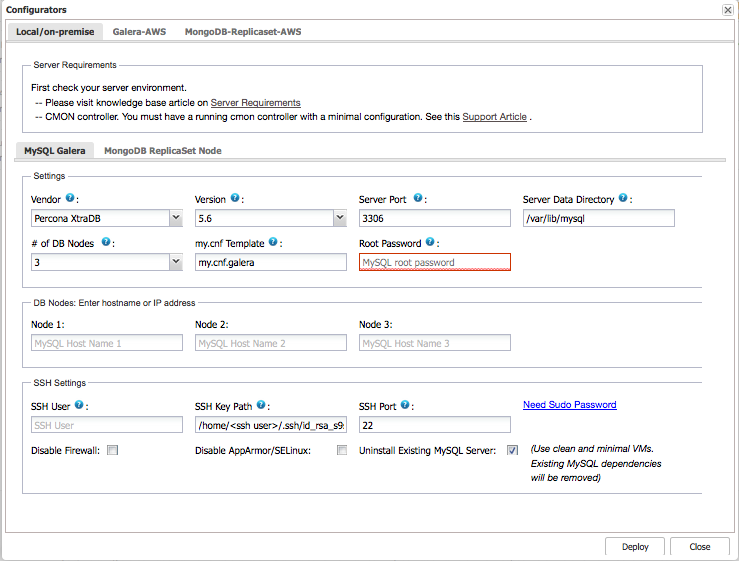
Detection of long running and deadlocked transactions: Deadlocks, also called deadly embrace, happens when two or more transactions permanently block each other. These can cause quite a number of problems, especially in a synchronous cluster like Galera. It is now possible to view these through the web UI.
Galera Recovery – Detection of most advanced (last committed) node: In the unfortunate case of a cluster-wide crash, where the cluster is not restarting, you might need to bootstrap the cluster using the node with the most recent data. The admin can now get information about the most advanced node, and use that to bootstrap the cluster.
Registration of manually added nodes with ClusterControl: In some cases, an admin might be using other automation tools, e.g., Chef or Puppet, to add nodes to an existing cluster. In that case, it is now easy to register these new nodes to ClusterControl so they show up in the UI.
Failover and Slave Promotion in MySQL 5.6 Replication Setups: For MySQL Replication setups, you can now promote a slave to a master from the UI. It requires that you are on MySQL 5.6, and use GTID.
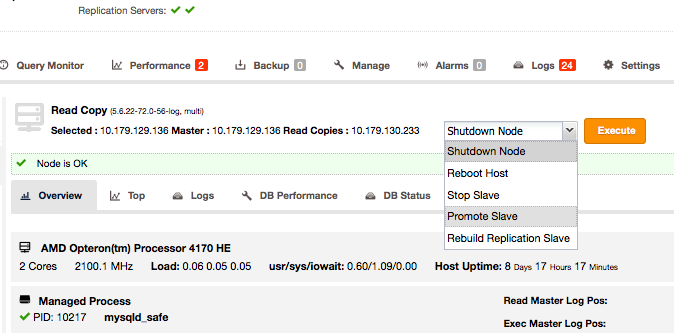
We encourage you to provide feedback and testing. If you’d like a demo, feel free to request one.
With over 7,000 users to date, ClusterControl is the leading, platform independent automation and management solution for MySQL, MariaDB, MongoDB and PostgreSQL.
Thank you for your ongoing support, and happy clustering!
For additional tips & tricks, follow our blog: https://severalnines.com/blog/.


